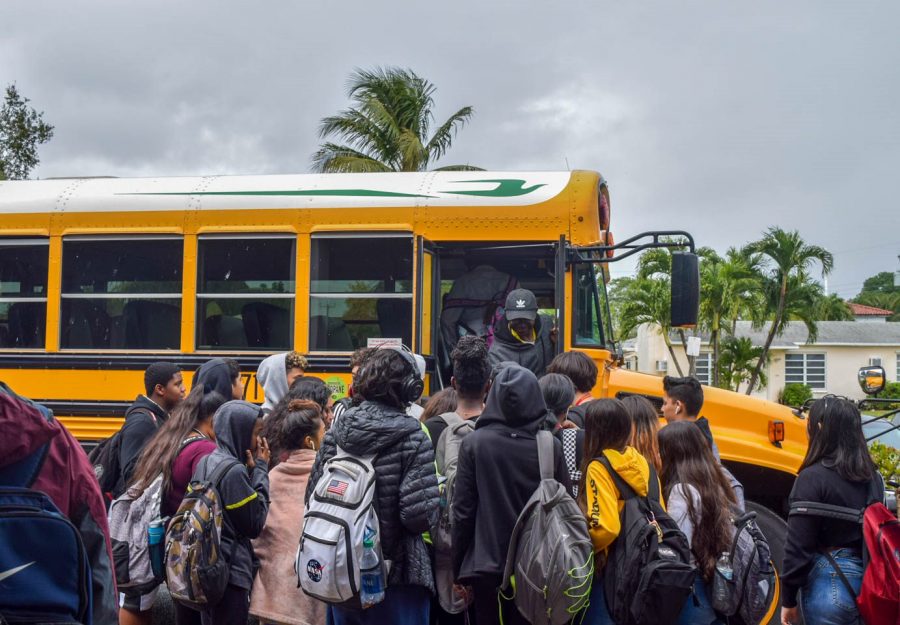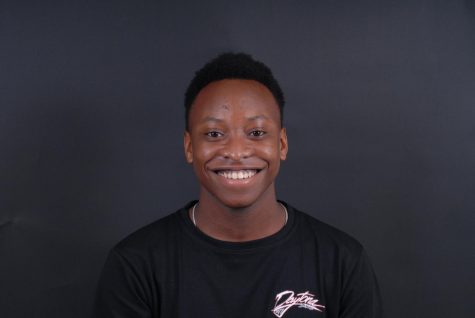Crowded Buses Leave Students without a Seat
March 4, 2020
Last year, SBHS sophomore Nicole Newmeyer had a seat on her school bus — it was on the floor.
“I was forced to sit on the floor of the bus with a few other kids because every seat on my bus was taken,” said Newmeyer.
She was riding on a bus built for 52, but was jammed with 65, or sometimes, 70 students. Throughout the year the students on her bus complained about the overcrowding. So Broward County Public Schools decided add another bus to ease crowding. Problem solved, right? Wrong.
According to student research at South Broward High School, during first semester and even towards the beginning of second semester, four out of ten buses were in violation of state vehicle capacity laws, with some buses holding well over the maximum of 52 high schoolers.
Students reported overcrowding in bus routes 3068, 3070, 3071, and 3075 and want relief from the compact, chaotic nature of their only way of getting home. Sandor Hernandez Jr, a student on route 3071, was one of the students experiencing the problem daily.
“My bus is packed to the max. Every seat filled, every space occupied, almost every day,” said Hernandez Jr.
The county sets a guideline for capacity because in the event of an emergency crash or vehicle fire, students need to utilize the emergency exits in a swift and orderly fashion.
Overcrowded buses, especially where students are sitting on the floor, put students in danger in the event of an emergency. Tommy Fitzpatrick, the Broward County Busing Maintenance Supervisor, says its up to the bus drivers and/or school administration to deem a route overcrowded and to do something about it.
“When the driver reports her observations to his or her superiors, the routing department is responsible for the routing switch” said Fitzpatrick.
Aside from the safety violations that stem from an overcrowded bus, there is the student’s comfort. Sitting on the floor of a bus is uncomfortable.
SBHS student Vincent Brainard has encountered this situation before and says he regrets it. Sitting three to a seat is also not an option for the six-foot-tall sophomore.
“I’ve sat on the floor a few times and it was a very bumpy ride,” said Brainard. “That’s something I never want to do again.”
It’s a daily scene of chaos when the bell rings and a thousand students rush to the back of the school where the buses are loaded.
The prospect of sitting on the bare floor of a bus spurs many students on to shove their way onto the bus, in hopes of securing a seat. SBHS sophomore Sacha Robertson is one of the students that have been through this experience.
“It’s a struggle just to get on the bus because everyone is rushing and pushing to be one of the first to get their own seat,” said Robertson. “Many kids run really close to the bus just to get a seat.”
Even if students aren’t sitting the floor any more, students say its impossible for everyone to fully secure themselves in that seat if there are more than two to a seat.
“When you’re the third person in a seat, you basically are sitting on nothing and every time the bus turns, people fall off the seat and into the aisle,” said Newmeyer.
South Broward’s administrative team, including SBHS Assistant Principal Daryl Baker, is aware of the problem, and has taken the appropriate steps to curb this problem.
“I always check student identification to make sure every student is supposed to be on that particular route,” Baker said. “It serves as a deterrent for kids that like to bus hop and take away seats from students that are supposed to be riding on their bus.”
Nevertheless, overcrowding still remains an issue in the first few months of school and students don’t find comfort in the lack of seats.
“Overcrowding seems to be a recurring problem at the beginning of the year but slows down after students are made aware that administration checks if they intended to be on the bus,” Baker said. “Once students leave the school, or it’s is made obvious that students need to ride on their assigned buses, the problem begins to curb.”
Sacha Robertson’s experience still reflects the feelings of many students towards overcrowded buses.
“Riding an overcrowded bus home was by far [one of] of the worst memories as I have had in high school,” said Robertson.



